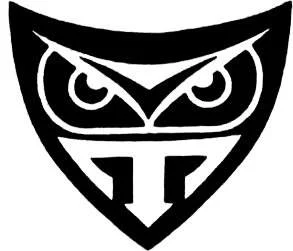Often when the protagonist of a speculative narrative must struggle against an unfeeling world, that world is represented by a faceless conglomerate, a near-governmental corporation which seems to control facets of society wherever the character looks.
So in Stock and Trade, our latest genre fiction feature series, we’re looking at fictional corporations. Today, we’re featuring the Tyrell Corporation
The Tyrell Corporation is responsible for the construction and deployment of “replicants” in Blade Runner, the film adaptation of Philip K. Dick’s novel Do Androids Dream of Electric Sheep? The Comapny is called the Rosen Corporation in the novel, and plays very little part in the story, but Tyrell plays a large part in the film, and even features its owner, Eldon Tyrell as a significant character.
Not much is revealed about the origins of the Tyrell Corporation, but it’s obvious that Tyrell himself was a genius engineer and programmer, and so likely had a hand in creating the first Tyrell products.

The company specialized in building “replicants.” In the novel, they are simply called androids, but that implies that they are robotic, which is not true. Their composition is nearly indistinguishable from a human, and their parts are all biological.
The difference is only that they are manufactured, rather than born, and that they have been given a set life-span of four years, to ensure that they do not become to emotional or powerful.
The replicants are sold as slaves to Mars, and the outlying colonies, where they must remain, as replicants are forbidden to come to ever come to Earth.
The replicants featured in the film are supposed to be of a new design, the sixth replicant model developed by Tyrell. Early replicants, while physically indistinguishable from people, were lacking in empathy, and it was easy to tell just from normal conversation, if a person was a replicant.
As it became tougher, a reliable test needed to be developed. The Voight-Kampff questionnaire filled this role. In the original novel, it only took seven or eight questions to show humanity or lack of it, but in Blade runner, it typically takes more than thirty cross-referenced questions, and the new models require nearly 4 times that.
The detectives who hunt down, question, and ‘retire’ the replicants are known as Blade Runners, and the conflict of the film comes to Tyrell when one of them, Rick Deckard goes to speak with Tyrell about the reliability of the Voight-Kampff for the new models. By way of answering, Tyrell passes his assistant, Rachael to Deckard, who he discovers is a replicant who genuinely thinks that she is a person, due to implanted childhood memories.
The future of Tyrell Corporation is made uncertain when one of the replicants being hunted by Deckard visits Tyrell and murders him in a fit of rage against his “creator.”

The products and practices of Tyrell raise the themes of slavery, subjugation, maturity, and the meaning of humanity. The characters are forced to ask themselves many times what it means to be a person.
Rachael thinks she is a person, and even Deckard has a difficult time coming to a conclusion about her nature, and seeing two of the replicants seeming to express love to one another plants more doubt.
Finally, as Deckard witness the death of his final target on a rainy rooftop, we get the famous emotional, short soliloquy, “I’ve seen things you people wouldn’t believe: Attack ships on fire off the shoulder of Orion; I’ve watched c-beams glitter in the dark near the Tannhauser Gate. All those moments will be lost in time; like tears in rain. Time to die.”
Come back tomorrow, when we’ll be taking a look at Aperture Science. If you have an idea for a corporation we could feature in this series, let us know in the comments.






